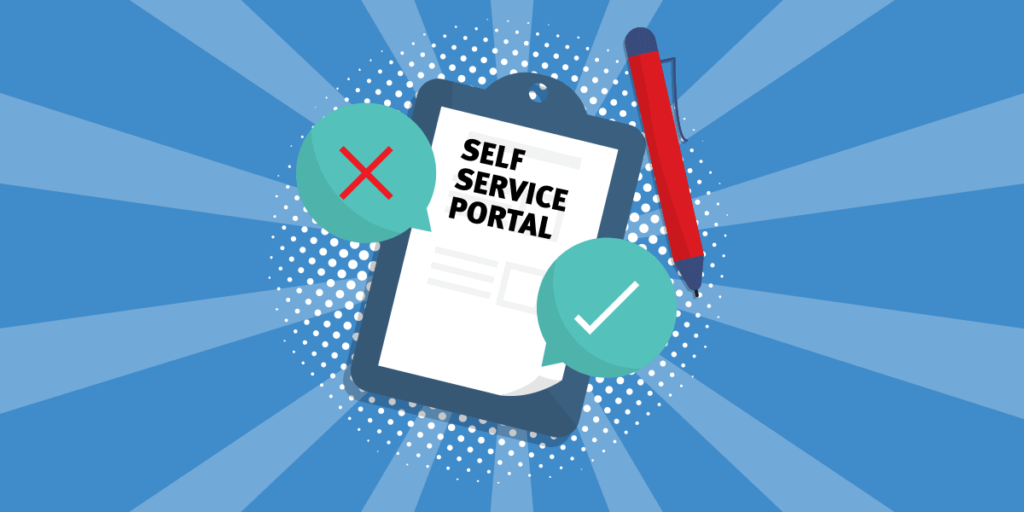The IT self-service portal has long been touted as the savior of IT service management (ITSM), offering IT departments the ability to save costs and deliver faster issue remediation and service provision while also providing a better end-user experience. But did this actually happen? The last industry stat on self-service success I saw is old now – but it’s so insightful that I’ve still included it below. So, to help, in addition to recently creating a paper on the future of IT self-service there’s also a quick IT self-service survey in-flight to see where we currently stand with the IT self-service portal in 2021.
Can you help @ITSM_tools to better understand where we stand with self-service in 2021 by taking part in its quick survey? #selfservice #ITSM Share on XPlease take this IT self-service portal survey
Please help us all understand how well the industry is now doing with IT self-service – it should take just a few minutes. Not only will it potentially help others to see that they’re not alone in struggling with self-service, but it also gives us insight into the level of preparedness of organizations for sharing these self-service capabilities with other parts of the organization via enterprise service management or digital transformation strategies.
If you’re feeling down on your self-service portal, then please keep reading too. The abridged extract, from the aforementioned self-service portal paper, below might be helpful going forward.
So many IT self-service portals failed to deliver the anticipated benefits
Let’s kick off with the stat I called out in this article’s opening. It was a wake-up call for an IT industry that, for the previous half-decade, had been able to truly see the number of organizations struggling with what was highly-adopted IT self-service portal technology. The delivery of the technology was the easy bit; it was the realization of the promised benefits that was the issue, mainly through a lack of end-user adoption.
Thankfully, in 2017, a research report from the Service Desk Institute (SDI) quantified the low level of portal success in simple terms (as well as recognizing those organizations that were successful). It finally backed up much of the anecdotal evidence that was being shared in the ITSM community.
Only one in eight organizations were succeeding with IT self-service when last surveyed… Hopefully, we’ve seen some improvement on this. Please take this quick survey to help us find out. #selfservice #ITSM Share on XThis SDI research found that:
“The increase in the adoption of self-service tools is undoubtedly due to the range of associated benefits that comes with the implementation of such a solution, most commonly reduced support costs, increased customer satisfaction, and an around-the-clock support channel. However, the number of organizations that have realized these benefits and have achieved the anticipated return on investment (ROI) are few, less than 12% according to recent SDI research.”
Only one in eight organizations succeeding with IT self-service is still a scary stat but, hopefully, we’ve seen some improvement on this. The survey results will tell us how much.
Why an IT self-service portal fails
In terms of differentiating IT self-service portal success from the failure to reap the expected benefits, the research report’s findings and conclusions backed up what was already being shared as industry good practice guidance for IT self-service portal success.
Much of this can be positioned under the umbrella need for organizational change management (OCM) to help gain employee buy-in for what’s ultimately a change to the traditional ways of working for employees and not simply the introduction of new technology.
Where is your organization currently with IT self-service? Have you succeeded with benefit delivery? Please help us to know by completing this short survey. #ITSM #selfservice Share on XIn summary, and it’s still worth downloading and reading this great self-service portal SDI report, various factors play into the struggles that organizations have with portal adoption (by employees), which include:
Importantly, none of these failure factors are insurmountable.
So, where is your organization currently with IT self-service? Have you succeeded with benefit delivery? Or do you still need to start, improve, or restart your IT self-service capabilities?
Wherever you are with your IT self-service portal, we’d really appreciate you taking the few minutes to complete our quick survey – the findings will be presented back in a future ITSM.tools article.
If you would like to read some helpful ITSM articles, please take a look at these:
- The Similarities and Differences between ITIL 4 and VeriSM
- Debunking the Common IT Asset Management Myths
- Critical Ingredients for Running Your IT Department
- The Mistakes to Avoid When Integrating DevOps and ITSM
- 4 Tips for an IT Service Catalog for High Employee Engagement
- How to Successfully Implement a New ITSM Tool
Stephen Mann
Principal Analyst and Content Director at the ITSM-focused industry analyst firm ITSM.tools. Also an independent IT and IT service management marketing content creator, and a frequent blogger, writer, and presenter on the challenges and opportunities for IT service management professionals.
Previously held positions in IT research and analysis (at IT industry analyst firms Ovum and Forrester and the UK Post Office), IT service management consultancy, enterprise IT service desk and IT service management, IT asset management, innovation and creativity facilitation, project management, finance consultancy, internal audit, and product marketing for a SaaS IT service management technology vendor.

